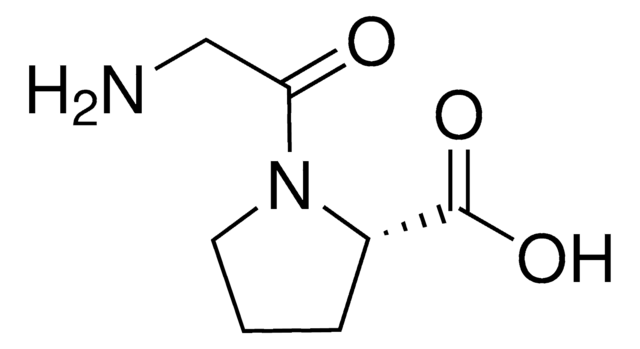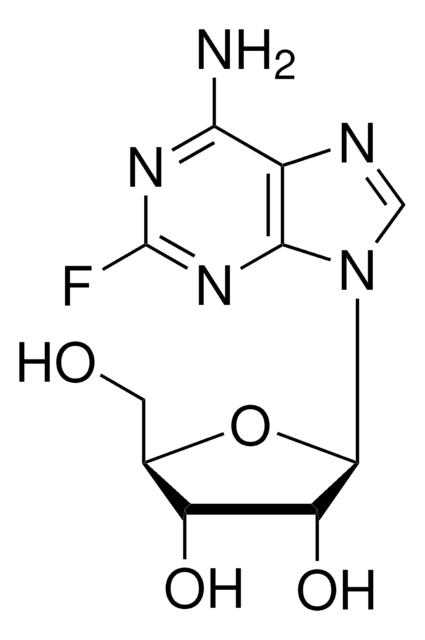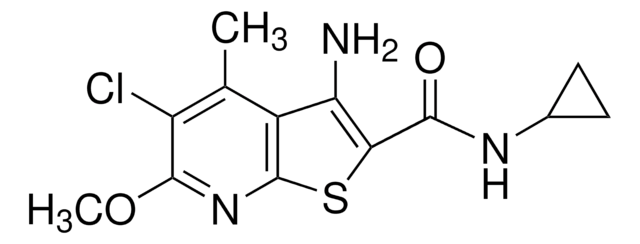SML0917
BMS-986122
≥98% (HPLC)
Synonym(s):
2-(3-Bromo-4-methoxyphenyl)-3-[(4-chlorophenyl)sulfonyl]-thiazolidine
Sign Into View Organizational & Contract Pricing
All Photos(1)
About This Item
Empirical Formula (Hill Notation):
C16H15BrClNO3S2
CAS Number:
Molecular Weight:
448.78
UNSPSC Code:
12352200
NACRES:
NA.77
Recommended Products
Assay
≥98% (HPLC)
form
powder
color
white to beige
solubility
DMSO: 20 mg/mL, clear
storage temp.
2-8°C
Biochem/physiol Actions
BMS-986122 is a positive allosteric modulator (PAM of the m-opioid receptor). BMS986122 displays little or no agonist activity alone, but dose dependently increases endomorphin-I induced b-arrestin recruitment, and inhibition of forskolin-induced adenyl cyclase activity. The compound also potentiates DAMGO-stimulated GTPgS receptor binding.
BMS-986122 may exhibit an antinociception effect in vivo by increasing the efficiency of Met-enkephalin (met-Enk) to inhibit γ aminobutyric acid (GABA) release in the periaqueductal gray region of the brain.
Features and Benefits
This compound is a featured product for Neuroscience research. Click here to discover more featured Neuroscience products. Learn more about bioactive small molecules for other areas of research at sigma.com/discover-bsm.
Signal Word
Warning
Hazard Statements
Precautionary Statements
Hazard Classifications
Eye Irrit. 2
Storage Class Code
11 - Combustible Solids
WGK
WGK 3
Flash Point(F)
Not applicable
Flash Point(C)
Not applicable
Certificates of Analysis (COA)
Search for Certificates of Analysis (COA) by entering the products Lot/Batch Number. Lot and Batch Numbers can be found on a product’s label following the words ‘Lot’ or ‘Batch’.
Already Own This Product?
Find documentation for the products that you have recently purchased in the Document Library.
Neil T Burford et al.
Proceedings of the National Academy of Sciences of the United States of America, 110(26), 10830-10835 (2013-06-12)
μ-Opioid receptors are among the most studied G protein-coupled receptors because of the therapeutic value of agonists, such as morphine, that are used to treat chronic pain. However, these drugs have significant side effects, such as respiratory suppression, constipation, allodynia
Ram Kandasamy et al.
Proceedings of the National Academy of Sciences of the United States of America, 118(16) (2021-04-14)
Positive allosteric modulators (PAMs) of the mu-opioid receptor (MOR) have been hypothesized as potentially safer analgesics than traditional opioid drugs. This is based on the idea that PAMs will promote the action of endogenous opioid peptides while preserving their temporal
Articles
DISCOVER Bioactive Small Molecules for Neuroscience
Our team of scientists has experience in all areas of research including Life Science, Material Science, Chemical Synthesis, Chromatography, Analytical and many others.
Contact Technical Service









